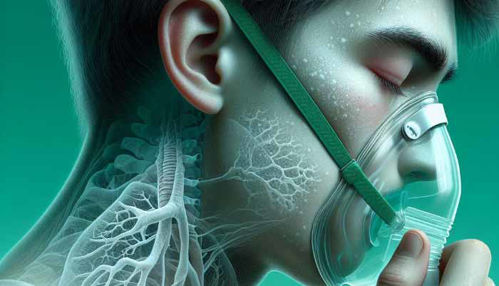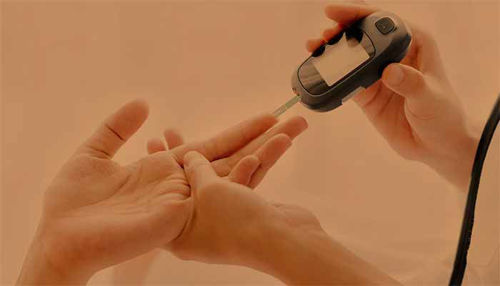The consumption and use of marijuana (cannabis) is widespread. Research in secondary schools has shown that students consume it at different doses.
CANNABIS - MARIJUANA abuse: General | Symptoms | Drug Addiction | Effects of alcohol | Questions and Answers | Sources/references
In the USA, marijuana is usually smoked in the form of cigarettes (joints), which are made from the stems, leaves, and flower tops of the dried plant (it is called Cannabis Sativa in Latin). Marijuana is also used as hashish, which is the compressed resin (tarry substance) of the same plant. The active ingredient in marijuana is tetrahydrocannabinol (THC), which comes in several forms, the most active of which is delta-9-THC. The latter is produced synthetically and is called dronabinol.
It is used in research and sometimes to treat nausea and vomiting caused by chemotherapy in cancer treatment.
Video content: effects of taking marijuana on the brain and the body

Some people become addicted to marijuana for mental reasons, which can have all the hallmarks of a severe addiction. Physical dependence on marijuana has not been reliably established. Just like alcohol, marijuana is taken chiefly occasionally, without causing any social or mental consequences to the users, and they also do not become dependent on it.
Symptoms
Marijuana suppresses brain activity, causing a dreamy state in which thoughts seem disjointed and uncontrollable. The perception of time, space, and colors is distorted and accentuated. Colors may seem brighter, sounds louder, and appetite increased. Marijuana generally releases tension and produces feelings of pleasure. Feelings of rapture, arousal, and euphoria (feelings of exaltation - "high" in the jargon of people with addiction) depend on the environment where the drug is used. It is essential to determine whether the marijuana smoker is alone or in a group and what mood he was in before taking the drug.
Picture: the appearance of hemp buds

Marijuana impairs the ability to communicate and move, so driving a car after taking it is very dangerous. People who take large amounts of marijuana can become confused and disoriented. They can become psychotic when they don't know who they are, where they are, or what time it is. Patients with schizophrenia are particularly susceptible to its effects. There is strong evidence that marijuana use can make schizophrenia worse. Sometimes, a marijuana user can be overtaken by panic, which likes to cling to a novice user. Other effects of marijuana include rapid heartbeat, inflamed conjunctivae, and dry mouth.
Video content: specific effects of cannabis on the body

Marijuana users develop a tolerance to the drug. It means that over time, they can tolerate increasing amounts of marijuana. A post-marijuana withdrawal crisis is characterized by muscle twitching and insomnia. Since marijuana is eliminated from the body slowly, even over several weeks, the signs of an abstinence crisis are insignificant, and the occasional user does not have them at all.
Some studies have shown that long-term use of large amounts of marijuana can reduce testosterone levels, testicle size, and sperm count in men and cause irregular periods in women. However, the listed effects do not always occur and are not at all reliably proven. Pregnant women who smoke marijuana give birth to smaller babies than those who don't. In addition, delta-9-THC passes into breast milk and can affect the baby in the same way as the mother.
Long-term smoking of large amounts of marijuana affects the lungs in a similar way to cigarettes. Marijuana users, therefore, often have bronchitis and are more likely to suffer from lung cancer.
Marijuana can be detected in the urine several days after the last smoke, even if the smoker is only occasional. In the case of regular marijuana smokers, the results of the urine test are positive for even longer, as the drug is excreted very slowly from body fat. A urine test is an effective way to determine the presence of marijuana, but a positive test result only confirms that a person has taken it. But he does not say how badly he was drugged (poisoned). There are exact tests with which it is possible to prove the last use of marijuana, even one year ago.
Drug addiction and other addictions
Addiction is a forced activity or excessive engagement in a particular activity. It can be gambling or the use of any substance, including drugs. Drugs can cause either mental dependence alone or mental and physical dependence together.
Psychological addiction is the result of an indefensible desire to take a drug for pleasure or to overcome tension and avoid discomfort. Drugs that cause mental dependence usually act on the brain and have one or more of the following effects:
• reduce anxiety and tension,
• cause elevated mood, excessive cheerfulness, or other pleasant mood changes,
• give feelings of increased mental and physical abilities,
• change the perception of feelings.
Image: Addiction Support Group

Mental addiction can be powerful and challenging to overcome. It is widespread with drugs that change the mood and perception of feelings.
Addicted people deal with drugs most of the day, so they feel the consequences of addiction in all areas of their lives: at work, in studies, and interpersonal relationships in the family and society. A severely addicted person focuses all his thoughts and actions only on how he will get and take the drug. A person with an addiction may use other people, lie, and steal to get drugs. People with an addiction only have difficulty stopping taking it and are unable to abstain for a long time.
Some drugs cause physical dependence, which is not always accompanied by mental dependence. The body gets used to a drug that causes physical dependence if a person uses it regularly for a long time. Its long-term use leads to tolerance (portability) and a withdrawal crisis when a person stops taking it. Tolerance means that someone needs to take more and more of the drug to get the same effect. A withdrawal crisis occurs when a person stops taking the drug or its effect is blocked by the corresponding drug.
During a withdrawal crisis, a person feels sick and shows various symptoms, such as headache, diarrhea, or tremors. Withdrawal can cause a severe and life-threatening medical condition.
Video content: the most intense withdrawal symptoms in the case of cannabis and other drugs

Drug abuse involves more than just its physiological effects. For example, cancer patients who take severe pain relief with morphine for months or years rarely become mentally dependent on psychoactive substances, although they can become physically dependent. Drug abuse is primarily defined by inappropriate behavior associated with drug use and the social labeling of such behavior. Throughout human history, almost every society has punished the use of certain drugs, even if they are harmless. On the other hand, mood-altering substances such as alcohol and hallucinogenic mushrooms played an essential role in some religious rituals. Some societies accept the consumption of certain substances that others do not. Societies can also change their attitude towards the drug over time and first accept it, then reject it.
In the US, the medical label drug abuse primarily means dysfunction and maladjustment, not addiction. Colloquially, the label means either experimenting with illicit drugs, taking legal drugs to relieve problems or symptoms in a way other than prescribed by a doctor, or taking an addictive drug. Drug abuse occurs in all social strata and is known to highly educated professionals as well as the uneducated and unemployed.
Even if a particular drug has a powerful effect, the user's environment can significantly shape its effect on mood. For example, a person who starts drinking alcohol becomes even sadder when the drink takes effect.
If the same person drinks with friends who are happy under the influence of alcohol, he can become happier himself. It is, therefore, not always possible to predict,
Drugs that can cause addiction
|
Drug |
Mental addiction |
Physical addiction |
|
alcohol |
yes |
yes |
|
narcotics |
yes |
yes |
|
hypnotics |
yes |
yes |
|
benzodiazepines (anti-anxiety drugs) |
yes |
yes |
|
inhalants |
yes |
possible |
|
volatile nitrites |
possible |
probably not |
|
Stimulants (stimulate brain activity) |
||
|
amphetamines |
yes |
yes |
|
methamphetamine (speed) |
yes |
yes |
|
ecstasy |
yes |
yes |
|
2,5-methoxy-4-methylamphetamine (DOM, STP) |
yes |
yes |
|
cocaine |
yes |
yes |
|
phencyclidine (PCP, angel dust) |
yes |
yes |
|
Hallucinogens |
||
|
LSD |
yes |
possible |
|
marijuana |
yes |
possible |
|
mescaline |
yes |
possible |
|
psilocybin |
yes |
possible |
how the drug will affect the same person in different circumstances.
The emergence of drug addiction is a complex and not thoroughly researched phenomenon. It is influenced by the chemical characteristics of the drug, its effect, the personality of the person who consumes the drug, his genetic tendencies, and pressures from his environment. How and why occasional drug use progresses to tolerance and addiction is particularly poorly researched. Even people who have a high risk of becoming addicted themselves due to addiction in the family have not been shown to respond to the effects of drugs biologically or psychologically differently than others. However, some studies have shown that alcoholics have a genetically worse response to the effects of alcohol.
Video content: drug mechanism of action and addiction

Researchers have been very concerned with the so-called addictive personality. People with an addiction often have low self-esteem, are immature, easily frustrated, have difficulty solving their problems, and have problems in relationships with the opposite sex. People with an addiction try to escape reality and are fearful, withdrawn, and depressed. Some often attempt suicide or deliberately injure themselves. Addicts
Effects of alcohol on non-alcoholics
|
Blood alcohol concentration |
Effect |
|
0.5 per mille (0.5 mg/kg)* |
playfulness, calmness |
|
0.8 per mille (0.8 mg/kg) |
worse coordination of movements (reduced mental and physical abilities), slowed reflexes (both reduce driving abilities) |
|
1 per mille (1 mg/kg) |
noticeably impaired coordination |
|
2 per mille (2 mg/kg) |
confusion, memory problems, severe disability (cannot stand) |
|
Three ppm (3 mg/kg) |
loss of consciousness |
|
Four ppm (4 mg/kg) and above |
coma, death |
* alcohol in milligrams (mg) per kilogram (kg) of blood.
They are also described as dependent personalities who look for support in their relationship with others and only have difficulty taking care of themselves. Some people get upset quickly over little things and have poor control over their sexual needs. Such drugs help control behavior. However, most of these personality traits appear to be the result of long-term addiction and were not present in people with an addiction before they became addicted.
Image: Family members can help...

Sometimes, family members or friends behave in such a way as to encourage the person with an addiction to continue abusing alcohol and drugs. Such people are called co-addicts, and they usually manage the addict's sick leave or excuse him in various ways. An addict's friend, for example, defends it like this: "Peter didn't want to break the equipment in the pub; he was just angry because they didn't want to serve him any more drinks." The co-addict often begs the person with an addiction to stop drinking or drugs but rarely does anything practical to help the person with an addiction change his behavior.
Video content: Why is it so hard to stop using marijuana?

Family members and friends who don't care what happens to the person with an addiction should encourage him to stop using drugs and get treatment. If the person with an addiction refuses treatment, family members should threaten to disown him or divorce him. This seems a bit cruel, but such behavior must be agreed with a specialist who can take him for treatment.
A pregnant woman who is addicted also drugs the fetus. He often does not even tell the doctor that he is taking drugs. Thus, the fetus also becomes physically dependent on the drug. Such a newborn falls into a withdrawal crisis shortly after birth. However, newborns who survive it can have a lot of other problems.
It also happens that the illegal drug is not what it is sold for. It can be of inferior quality and of varying strength, which can be very dangerous for the person with an addiction.
Questions and answers
What is the simple definition of cannabis or cannabis?
It is a psychoactive dried flower bud, leaf, or preparation (such as hashish) or a chemical (such as THC) derived from the cannabis plant[1].
How do cannabinoids work in the body?
Like opioids, cannabinoids produce specific effects by interacting with specific receptors located in different parts of the central nervous system. Simply put, cannabinoids regulate how cells communicate with each other and how they send, receive, or process communication messages[2].
Is CBD the same as cannabis?
Cannabidiol (CBD) is a compound found in marijuana. Hemp is defined as any part of the Cannabis Sativa plant with no more than 0.3% tetrahydrocannabinol (THC), the "mind-altering" substance in marijuana[3].
<sleepid="sources">Sources and references
Large health manual for home use, Youth Book Publishing House
- Cannabis - https://www.merriam-webster.com
- What are cannabinoids? - https://adf.org.au
- CBD: What You Need to Know - https://www.cdc.gov










 Facebook
Facebook
 Instagram
Instagram
 info@moja-lekarna.com
info@moja-lekarna.com

